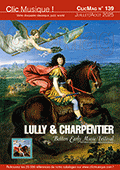 Enfant prodige, au piano, au violon, sérieusement instruit par de rigoureuses études au Conservatoire de Leipzig, Gernsheim eut l’occasion d’y rencontrer Moscheles, Dreyschock, David avant de fréquenter à Paris Gouvy, Rossini, Liszt, Anton Rubinstein, Alkan, Lalo, Saint-Saëns, puis à Mayence Max Bruch, Ferdinand Hiller à Cologne, Woldemar Bargiel à Rotterdam. Avec la montée du nazisme outre-Rhin peu après sa mort en 1916, Gernsheim, étant Juif, vit son œuvre rapidement tomber vite dans un injuste oubli. C’est pourquoi il faut saluer aujourd’hui la publication de ces deux magnifiques exemples de son art chambriste. Le Quatuor op. 83, de 1911, au chromatisme affirmé, est le cinquième et l’ultime de la série, réminiscent du Quatuor From my Life de Smetana (1876). Nul doute que ce quatuor est un chef d’œuvre, mais une perfection supplémentaire est indéniablement atteinte avec le Quintette pour deux violoncelles op. 89, en Mi bémol majeur (1916). Oubliée jusqu’à sa redécouverte en 2002, cette œuvre donne l’impression par la complexité de sa facture, ses contrastes chromatiques, dynamiques et motiviques, ainsi que la profusion de ses idées que Gernsheim pressentait que ce serait là sa dernière, une forme de testament comme le Quintette en Ut majeur de Schubert (1828). Voici donc deux magnifiques chefs d’œuvres à chérir, superbement rendus par les musiciens engagés du Quatuor Diogenes et Alexander Hülshoff. (Jacques-Philippe Saint-Gerand)  It is above all the genre of the string quartet in which Gernsheim has earned great merit with his new ideas. The Diogenes Quartet interpreted the first and third quartets on Vol. 1 of our complete recording. FonoForum attested that the Diogenes Quartet plays this music "almost ideally. In this interpretation, the music acquires a warmth of feeling that never slips into kitschy sentimentality. This is a balancing act that the quartet manages as a matter of course: unobtrusively demanding". (FonoForum 9/2019) On Vol. 2, the quartet devotes itself to the String Quartet op. 83 as well as the String Quintet op. 89. His Quartet op.83 was first published in print in 1911 by the publisher N. Simrock, but unlike Gernsheim's other chamber music works, only in parts without a score. It was first performed by the Klingler Quartet. Karl Klingler was concertmaster of the Berlin Philharmonic, for a time a member of the Joachim Quartet and later its successor at the Berlin Musikhochschule, and is also the dedicatee of the work. The movements show on the one hand Gernsheim's melodic qualities and at the same time the disjointedness of his late style. Gernsheim usually does not linger long on a melodic idea; the movement is characterised by short sections from which small motifs always develop further. The whole is accompanied by harmonic regressions, an extensive chromaticism and a play with major-minor shadings. Yet Gernsheim always remains rooted in the tonal tradition, but has already moved quite a bit away from the stylistics of his late friend Brahms. His Quintet op.89 was premiered in March 1916 while the composer was still alive, but was never printed. Everything is very chromatic to the limits of the diatonic, but not beyond, and is somewhat reminiscent of Max Reger's chamber music. Gernsheim takes the small-scale, chromatic, dynamic and motivic contrasts and outbursts to an even greater extreme than in his last string quartet. The movement shows such a great variety of ideas, as if Gernsheim had suspected that it was to be his last chamber music work and therefore wanted to pack everything in once more.
 |
